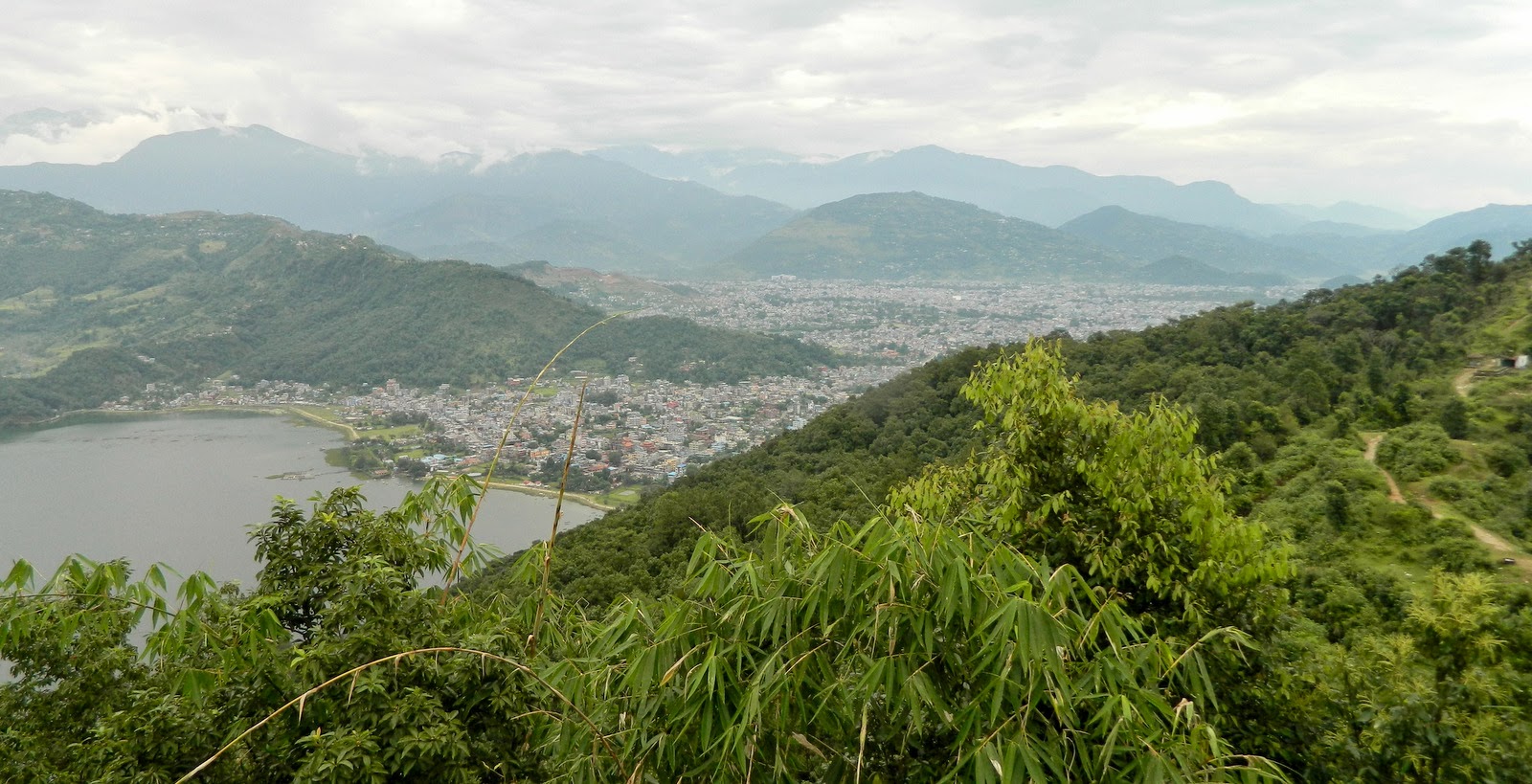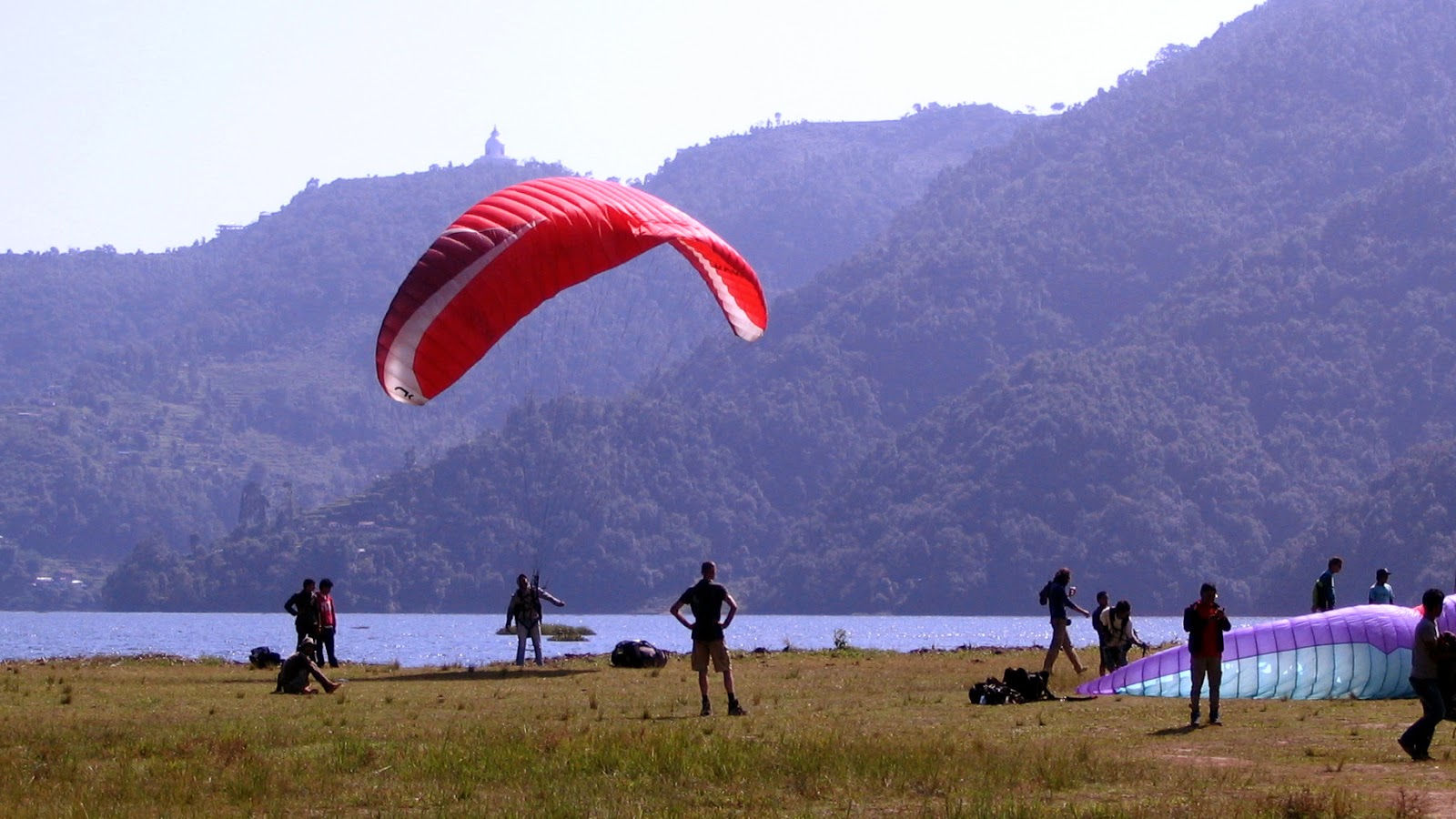Il biglietto d'ingresso / Admission ticket
Retro del biglietto d'ingresso / Back of admission ticket
LE GROTTE DI GUPTESHWOR MAHADEV
Le
Grotte di Gupteshwor Mahadev assieme alle Grotte di Mahendra e alla
Grotta dei pipistrelli formano quello che potremmo definire “il
mondo sotterraneo”
di Pokhara. Si trovano a sudovest della città, non lontano
dall'aeroporto. Più esattamente sono di fronte alla Cascata di Devi
( Devi's
Fall),
sull'altro lato della strada, la Siddhartha Highway... Ottobre. È il
primo pomeriggio quando scendiamo dal taxi. L'accesso è del tutto
singolare. Un grande portale immette in un affollato bazar
all'aperto. Vi si affacciano negozi e bancarelle di ogni tipo con gli
immancabili souvenir. Ci facciamo strada tra la folla. Poi la
biglietteria. Ingresso 100 rupie (€ 0,75). Una imponente scala a
chiocciola sprofonda in una voragine a cielo aperto nel suolo per
parecchi metri. Poi un robusto cancello è il lasciapassare al buio
dell'ambiente sotterraneo. L'umidità prende subito alla gola. La
temperatura è decisamente più elevata. Ma forse è solo una
sensazione. Il luogo è sacro agli Hindu e meta di pellegrinaggio per
i devoti. Uno stretto tunnel porta ad una riproduzione in grandezza
naturale di una vacca. È la vacca primordiale, rappresentazione
terrena della dea Kamadhenu, la madre di tutte le vacche, la “
Vacca dell'Abbondanza”.
Le sacre scritture la fanno emergere dal ribollire dell'oceano
cosmico primigenio di latte e quindi simbolo dello stesso cosmo. I
fedeli sostano. Fanno un'offerta. Inseriscono una moneta nel dorso
dell'animale e... alcune gocce di latte escono dalle mammelle... come
per incanto. L'antico rito della fertilità che si rinnova.
La
galleria ora diventa una camera sufficientemente grande. Su di una
piattaforma, protetta da una ringhiera metallica, si trova una
stalagmite, riconosciuta come il sacro lingam di Shiva e scoperta
solo alcuni anni fa. Così il termine Gupteshwor
è il “Dio
nascosto”
e Mahadev
è il “Grande
Dio”,
uno dei 1008 appellativi con cui Shiva viene identificato. Il luogo è
consacrato e fotografare è severamente proibito. Da qui il percorso
si fa più accidentato fino a raggiungere una enorme caverna.
L'atmosfera cambia improvvisamente. Dalla volta di roccia calcarea
cadono numerose e minute gocce d'acqua. Sulle pareti sono visibili i
diversi colori dei sedimenti di remotissime ere geologiche. Ed un
rombo di tuono sembra scaturire dal grembo della terra... Ancora
pochi passi... L'arcano si svela ai nostri occhi... Una scala
metallica, alquanto instabile, scende a superare un poderoso salto di
roccia. A pochi passi una pozza dalle acque limpide e chiare attira
l'attenzione dei visitatori. Solleviamo gli occhi. La forra si
restringe nell'oscurità fino a diventare una fessura verticale
illuminata dalla luce del mondo esterno. Attraverso quella spaccatura
naturale si fanno strada le acque tumultuose e tuonanti di una
cascata, la Devi's Fall (Patale
Chhango
nella lingua nepalese). Lo spettacolo è assicurato!
Per saperne di più: www.gupteshworcave.com
GUPTESHWOR MAHADEV CAVE
Gupteshwor
Mahadev Cave
together with Mahendra Cave and the Bat Cave form what I would call
the “subterranean
world”
of Pokhara. It is located southwest of the city, not far from the
airport, just opposite Devi's Fall on the other side of Siddhartha
Highway... October. It is early afternoon when our driver drops us
next to a large gate. It leads to an open space full of shops and
stalls filled with junk so precious for souvenir hunters. We push our
way through the crowd. Then the ticket office. Admission: 100 rupees
(about one dollar). An impressive spiral staircase in the open
plunges down into the ground for a few meters at the end of which we
are welcomed by a robust iron gate. Our pass to darkness. The humid
air seizes us immediately by the throat. It is warm, definitely
warmer inside... or is it just a feeling? The place is sacred for
Hindu population and a pilgrimage site for the devotees. A narrow
tunnel leads to a life-size statue of a cow. It is the primeval cow,
an earthly representation of goddess Kamadhenu, the mother of all
cows, the “Cow
of Plenty”.
According to the scriptures she emerged from the churning of the
primordial cosmic ocean of milk, a symbol of the cosmos herself. The
devotees linger for a few minutes. They make an offer. They put a
coin in the back of the animal and... drops of milk leak from the
udders... as if by magic. The ancient rite of fertility is renewed
once more.
Now
the tunnel turns into a chamber and on a platform, guarded by metal
rails, rises a stalagmite: the Shiva lingam. It was discovered only
in recent years. Thus Gupteshwor
means “Hidden
God”
and Mahadev
means “Great
God”,
one of the 1008 manifestations of Lord Shiva. The spot is a shrine
and taking photographs is strictly forbidden. From here we proceed on
uneven ground as far as a huge cavern. The atmosphere is quite
different: myriads of drops of water fall from the calcareous roof.
On the walls the different colours of deposits from far-off geologic
ages are clearly visible. And the rumble of thunder seems to come out
from the bowels of the earth... a few steps... The mystery is
solved... a metal ladder, quite unstable, leads us down a sheer rock
face. A few steps more... The clear water of a pond draws the
visitors' attention. We raise our eyes. In the dark the gorge gets
narrower and becomes a crack lit by the sun. From that cleft in the
rocks rush the thundering and rumblig waters of Devi's Fall (Patale
Chhango
in Nepali). The show is on!
External link: www.gupteshworcave.com
Una scala
metallica, alquanto instabile, scende a superare un poderoso salto di
roccia.
(foto di R. Frigerio)
A
metal ladder, quite unstable, leads us down a sheer rock
face.
(photo: courtesy of R. Frigerio)
Attraverso la spaccatura
naturale si fanno strada le acque tumultuose e tuonanti di una
cascata, la Devi's Fall. (foto di R. Frigerio)
From
the cleft in the rocks rush the thundering and rumblig waters of
Devi's Fall.
(photo: courtesy of R. Frigerio).








































